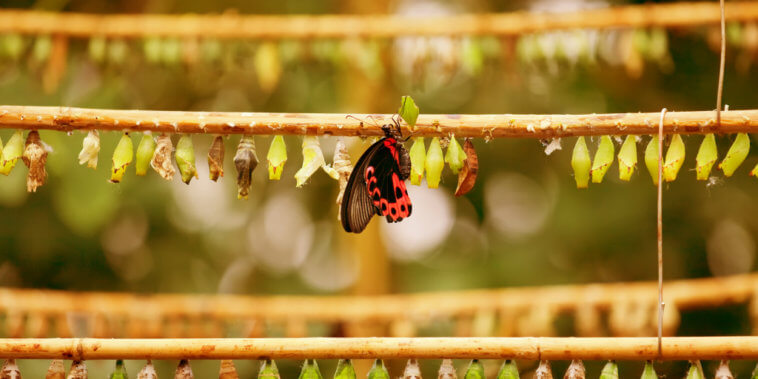Butterfly Garden: Set Your Heart a Flutter with Your Own Beautiful Butterfly Garden
Do you want to create a haven that attracts beautiful butterflies to your garden? Imagine colorful wings fluttering gracefully as butterflies dance from flower to flower. A butterfly garden not only adds a touch of magic to your outdoor space but also provides a valuable habitat for these delicate creatures. In this comprehensive guide, we will explore everything you need to know about creating a stunning butterfly garden. From plant selection to creating the ideal environment, we'll provide you with the knowledge and inspiration to embark on this enchanting journey.
Introduction to Butterfly Gardening
Butterfly gardening is the art of creating a welcoming habitat that attracts and nurtures butterflies throughout their life cycles. By understanding their needs and preferences, you can transform your garden into a paradise that not only pleases the eye but also supports the fragile butterfly population.
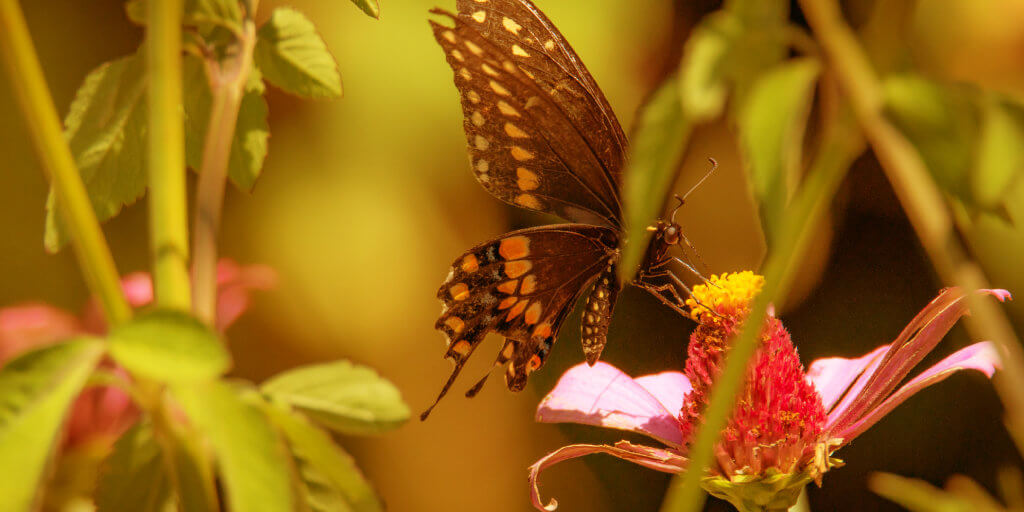
Benefits of a Butterfly Garden
Creating a butterfly garden offers numerous benefits, both for you and the environment. Some of the key advantages include:
- Ecological Value: Butterfly gardens provide crucial habitats and food sources for butterflies, contributing to their survival and promoting biodiversity.
- Educational Opportunities: Observing butterflies in your garden provides a valuable learning experience for children and adults alike, fostering a deeper appreciation for nature and its delicate balance.
- Garden Aesthetics: Butterflies add an element of beauty and enchantment to any garden, with their vibrant colors and graceful flight patterns.
- Pollination: Butterflies play a vital role in pollinating plants, helping to ensure the production of fruits, vegetables, and flowers in your garden.
Choosing the Perfect Location
Selecting the right location for your butterfly garden is essential for its success. Consider the following factors:
- Sun Exposure: Most butterflies prefer sunny areas, so choose a location that receives at least 6 hours of direct sunlight each day.
- Wind Protection: Locate your butterfly garden in a spot that is sheltered from strong winds, as butterflies are delicate and can be easily blown off course.
- Water Source: Ensure there is a nearby water source, such as a birdbath or shallow dish, for butterflies to drink from and obtain moisture.
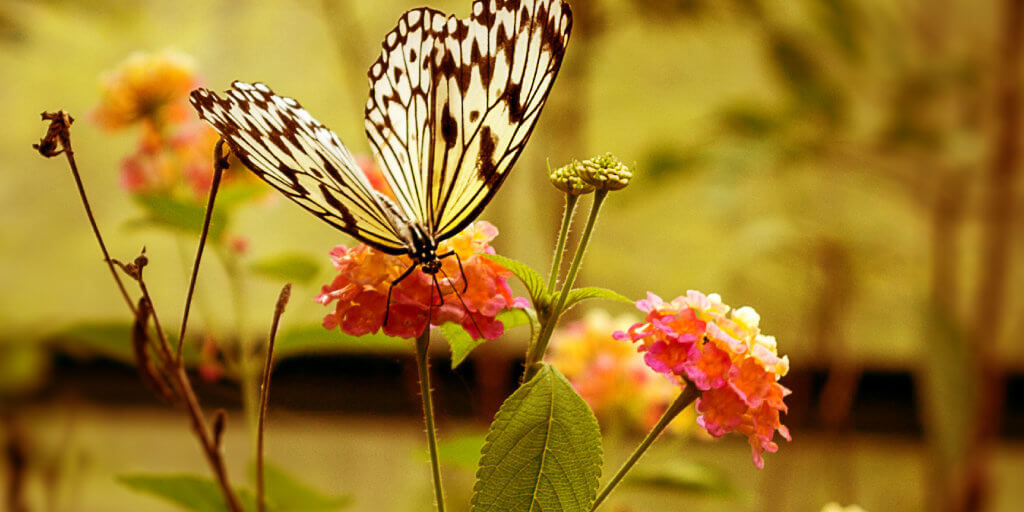
Butterfly-Friendly Plant Selection
Choosing the right plants is crucial for attracting and sustaining butterflies in your garden. Consider the following categories when selecting plants:
Native Plants for Butterflies
Native plants are well-adapted to the local climate and provide a familiar habitat for butterflies. Research native plant species in your area that attract butterflies and incorporate them into your garden.
Nectar Plants for Adult Butterflies
Nectar plants are essential for adult butterflies, providing them with the energy they need. Select a variety of flowering plants that bloom at different times throughout the season to ensure a continuous nectar supply.
Host Plants for Butterfly Larvae
Host plants are specific plant species that butterfly larvae (caterpillars) rely on for food. Different butterfly species have specific host plant preferences, so research the host plants for the butterflies you want to attract and include them in your garden.
Creating a Planting Plan
Design a planting plan that incorporates a mix of nectar plants and host plants, ensuring a diverse range of colors, shapes, and sizes. Group similar plants together for easier navigation by butterflies and consider the height and spread of each plant for an aesthetically pleasing arrangement.
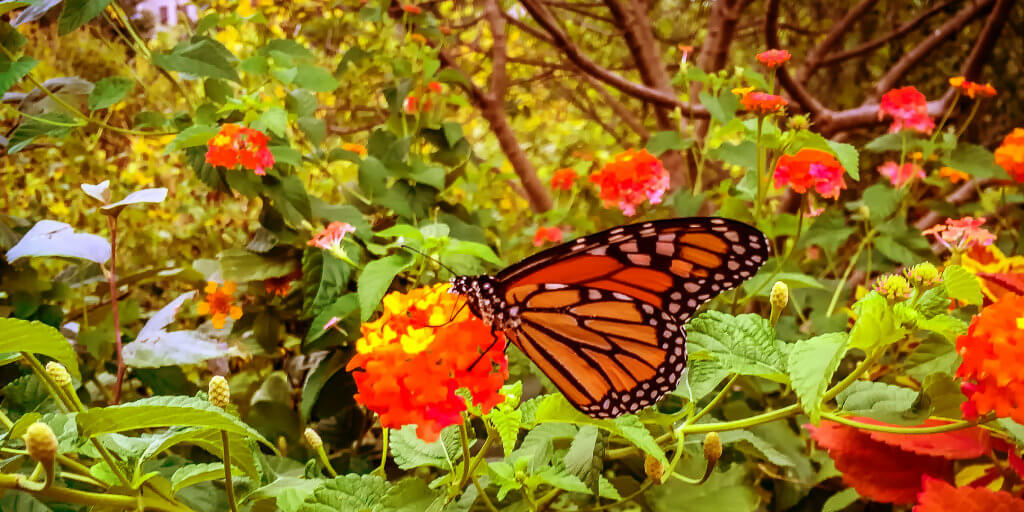
Providing Essential Resources
To make your butterfly garden irresistible, you need to provide essential resources that butterflies require.
Water Sources for Butterflies
Butterflies need access to water for drinking and obtaining minerals. Create shallow dishes or puddling areas using stones or wet sand to provide them with these vital resources.
Sunlight and Shelter
Butterflies are ectothermic creatures that rely on sunlight to warm their bodies. Ensure your garden has sunny spots where butterflies can bask and recharge. Additionally, incorporate shrubs or plants with dense foliage to provide shelter from predators and harsh weather conditions.
Puddling Areas
Butterflies gather in groups to puddle, a behavior where they sip moisture from damp soil or mud. Create puddling areas by providing a shallow depression filled with damp sand or soil.
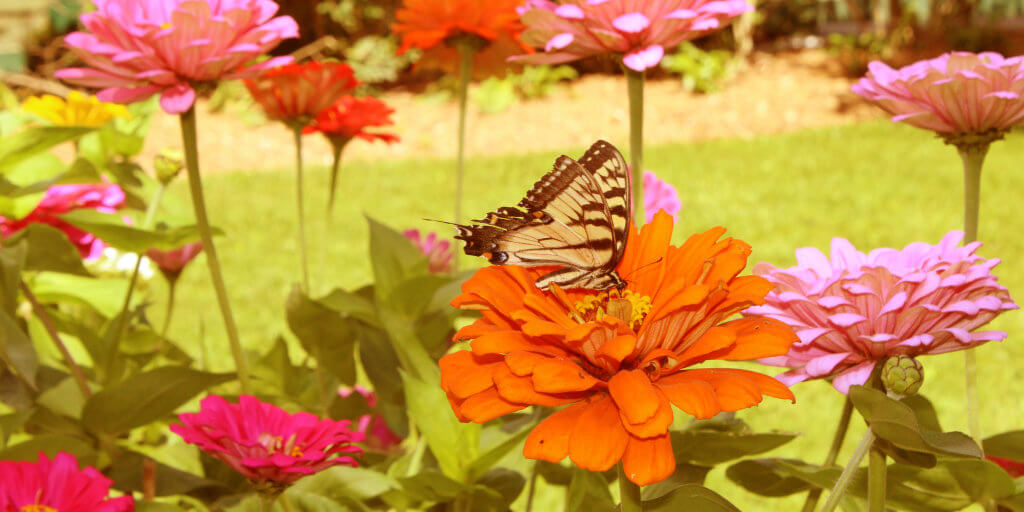
Garden Design and Layout
The design and layout of your butterfly garden play a significant role in attracting and supporting butterflies throughout their life cycles.
Creating a Butterfly-Friendly Landscape
Design your garden to mimic natural habitats that butterflies prefer. Incorporate a mix of open spaces, meadow-like areas, and sheltered spots with a variety of plants for butterflies to explore.
Color and Flowering Seasons
Butterflies are attracted to vibrant colors, especially red, yellow, orange, pink, and purple. Plant a diverse range of flowers with different colors and blooming seasons to ensure a continuous food source for butterflies.
Grouping Plants for Maximum Impact
Grouping plants of the same species or color together can create visual impact and make it easier for butterflies to locate nectar sources. Consider planting in clusters or drifts to create a more attractive and accessible garden for butterflies.
Maintenance Tips for a Thriving Butterfly Garden
To ensure your butterfly garden thrives, follow these maintenance tips:
Watering and Mulching
Water your garden regularly, especially during dry spells, to keep the plants healthy and provide moisture for butterflies. Apply organic mulch around plants to retain moisture, suppress weeds, and create a beneficial habitat for insects.
Pest Control without Harming Butterflies
Practice organic pest control methods to minimize the impact on butterflies and other beneficial insects. Avoid using harmful pesticides that can harm butterflies or their larvae. Instead, encourage natural predators and use eco-friendly pest deterrents.
Weeding and Pruning
Regularly weed your garden to prevent competition with your chosen plants and maintain a clean and tidy appearance. Prune plants as needed to promote healthy growth and remove any diseased or damaged foliage.
Additional Enhancements
Take your butterfly garden to the next level by incorporating these additional enhancements:
Butterfly Feeders and Fruit Dishes
Supplement the natural nectar sources by providing butterfly feeders filled with a homemade nectar solution. Additionally, place overripe fruits, such as bananas or oranges, in shallow dishes to attract butterflies.
Installing Butterfly Houses and Roosting Poles
Butterfly houses and roosting poles provide shelter and resting spots for butterflies. Install them in your garden to offer additional resources and create a welcoming environment for butterflies to rest and seek refuge.
Incorporating Stones and Sand Piles
Butterflies also need minerals, which they often obtain from mineral-rich soil or stones. Create a designated area in your garden with stones or a sand pile to provide butterflies with these essential minerals.
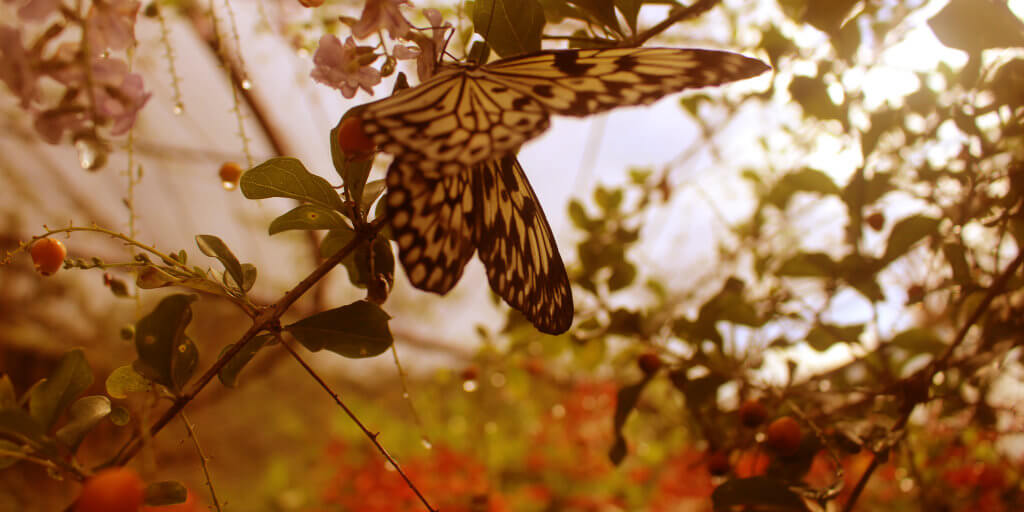
Observing and Enjoying Butterfly Behavior
Spend time in your butterfly garden observing the fascinating behavior of these enchanting creatures. Watch as they flutter from flower to flower, lay eggs on host plants, and witness the remarkable transformation from caterpillar to butterfly.
Protecting and Supporting Butterfly Conservation
Play a role in butterfly conservation by supporting organizations dedicated to protecting butterfly habitats and conducting research. Spread awareness about the importance of butterfly gardens and inspire others to create their own havens for these delicate creatures.
Creating Butterfly-Friendly Puddling Spots
Butterflies have a unique behavior called puddling, where they gather in groups to sip moisture from damp soil or mud. Creating designated puddling spots in your butterfly garden can attract a variety of butterfly species. Here's how you can create butterfly-friendly puddling areas:
- Select a Location: Choose a sunny spot in your garden where the soil is naturally damp or create a shallow depression in the ground.
- Fill with Moist Soil: Fill the depression with moist soil or sand mixed with water to create a damp and muddy area. Make sure the soil is not too wet, as it should provide a slightly moist surface.
- Add Minerals: To make the puddling area more enticing, add a sprinkle of compost or organic matter that contains minerals, such as wood ash or crushed eggshells.
- Decorate with Stones: Place some flat stones or rocks around the puddling area to provide additional perching spots for butterflies while they drink.
By incorporating puddling spots in your garden, you create a natural gathering place for butterflies to replenish their energy and obtain essential nutrients.
Butterfly-Friendly Garden Maintenance
Maintaining your butterfly garden is essential for its long-term success and the well-being of the butterflies. Here are some maintenance tips to keep your garden thriving:
- Regular Watering: Ensure your plants receive adequate water, especially during dry periods. Use a watering can or a gentle sprinkler to avoid disturbing resting butterflies or butterfly eggs.
- Weeding and Pruning: Regularly remove weeds from your garden to prevent them from competing with your butterfly-friendly plants for nutrients and space. Prune plants as needed to maintain their health and shape.
- Avoid Harmful Chemicals: Refrain from using chemical pesticides or herbicides in your butterfly garden, as these can be harmful to butterflies and other beneficial insects. Instead, opt for organic pest control methods or natural remedies to address any pest issues.
- Mulching: Apply a layer of organic mulch around your plants to help retain moisture, suppress weed growth, and improve soil health. Keep the mulch away from the base of the plants to prevent excess moisture accumulation.
By incorporating these maintenance practices into your routine, you can create a thriving butterfly garden that provides a healthy and sustainable habitat for butterflies.
Attracting Butterflies Beyond Your Garden
You can extend the reach of your butterfly garden by creating a butterfly-friendly environment beyond your own backyard. Here are a few ways to attract butterflies in other areas:
- Community Gardens: Get involved in local community gardens or public spaces where you can advocate for butterfly-friendly planting practices. Encourage the inclusion of nectar-rich flowers and host plants to support butterflies and educate others about the importance of these habitats.
- Schools and Parks: Collaborate with schools or park authorities to establish butterfly gardens on their premises. Engage students or community members in planting and maintaining these gardens, fostering a sense of environmental stewardship.
- Butterfly Waystations: Consider certifying your garden as a butterfly waystation through organizations like Monarch Watch. These waystations provide essential resources for butterflies during their migration journeys and contribute to their conservation efforts.
Conclusion
Creating a butterfly garden is a delightful and rewarding endeavor. By following the tips and guidelines outlined in this guide, you can design a beautiful and welcoming space that attracts a variety of butterflies and provides them with the resources they need to thrive. Remember, a butterfly garden not only adds beauty to your surroundings but also contributes to the preservation of these magnificent creatures.


